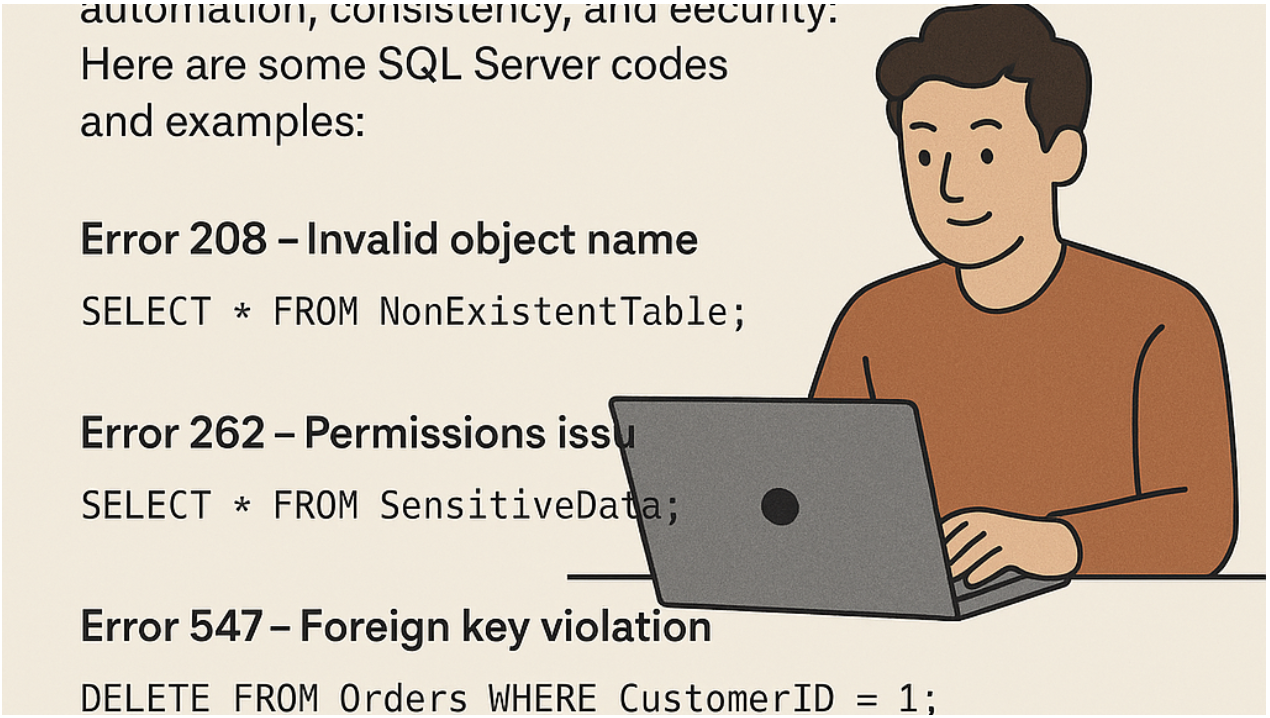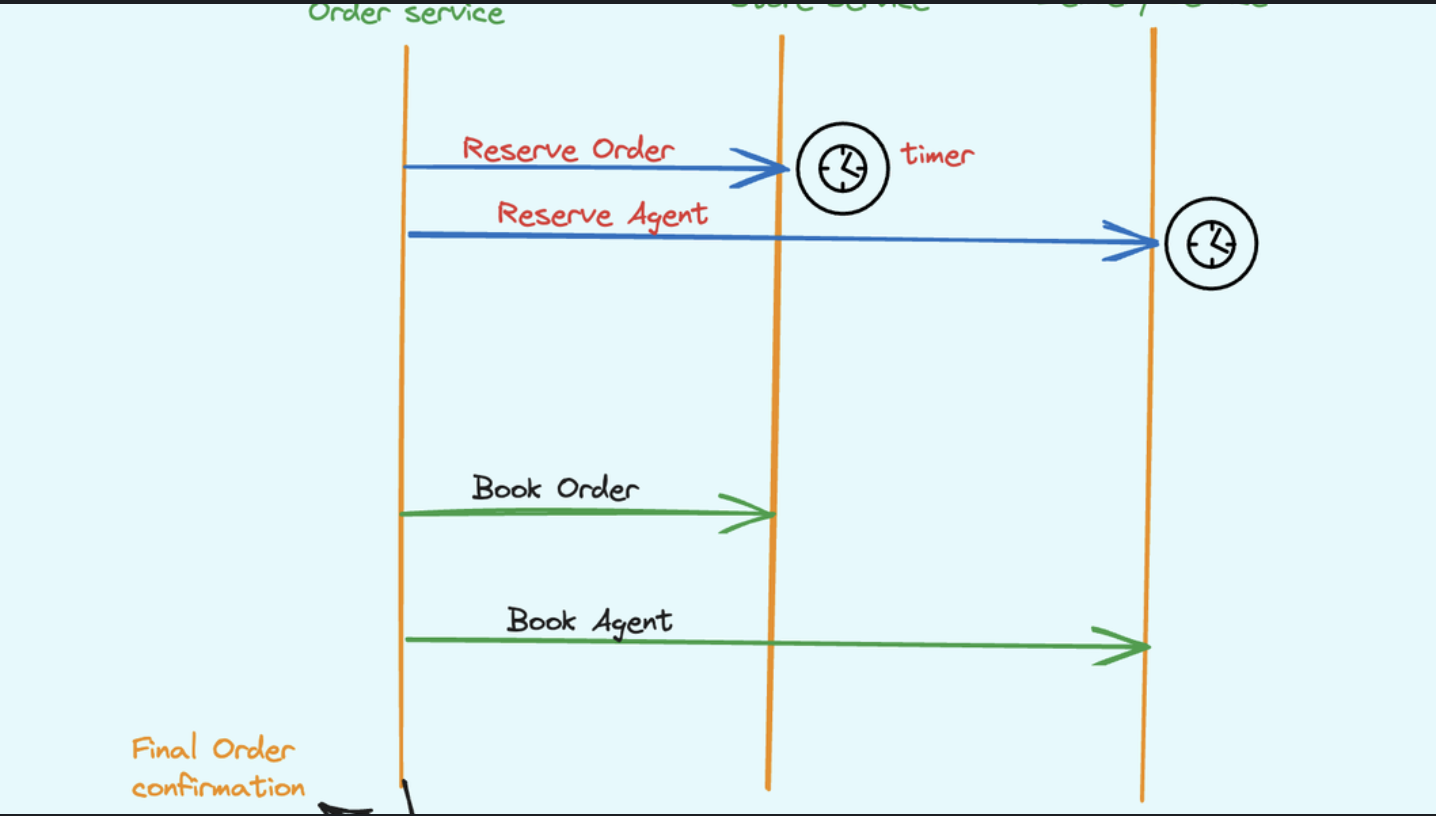When working with SQL Server, you may encounter various error codes that indicate specific issues in database transactions. One of the most common errors is Error 208: Invalid Object Name, but there are several others that developers and database administrators should be aware of. This edition will explain the most frequent SQL Server error codes, their causes, and solutions with practical code examples.
-
SQL Server Error 208: Invalid Object Name
Error 208 occurs when a query references a table or view that SQL Server cannot find in the current database context. The full error message looks like this:
Msg 208, Level 16, State 1, Line 1
Invalid object name 'table_name'.
Causes and Solutions
Misspelled Table or View Name
If you mistyped the table or view name, SQL Server will not be able to find it. To fix this, simply correct the spelling.
SELECT * FROM Employeess; -- Incorrect table name (should be Employees)
Solution: Check the spelling of the table name:
SELECT * FROM INFORMATION_SCHEMA.TABLES WHERE TABLE_NAME = 'Employees';
Wrong Database Context
USE TestDB;
SELECT * FROM Employees; -- Error if Employees exists in ProductionDB
Solution: Switch to the correct database:
USE ProductionDB;
SELECT * FROM Employees;
Schema Mismatch
SELECT * FROM Employees; -- Error if Employees is under 'HR' schema
Solution: Explicitly specify the schema.
SELECT * FROM HR.Employees;
Table or View Does Not Exist
SELECT * FROM NonExistentTable;
Solution: Verify the table’s existence.
IF OBJECT_ID('dbo.NonExistentTable', 'U') IS NOT NULL
PRINT 'Table exists';
ELSE
PRINT 'Table does not exist';
Temporary Table Scope Issue
CREATE TABLE #TempTable (ID INT);
INSERT INTO #TempTable VALUES (1);
SELECT * FROM #TempTable; -- Works only in the same session
Solution: Use a global temporary table (##TempTable) if needed across sessions.
-
SQL Server Error 262: Insufficient Permissions
Msg 262, Level 14, State 1, Line X
CREATE DATABASE permission denied in database 'master'.
Cause and Solution
Occurs when a user attempts an operation without sufficient privileges.
CREATE DATABASE MyDB; -- Error if user lacks permission
Solution: Grant the required permissions.
-
SQL Server Error 547: Foreign Key Constraint Violation
Msg 547, Level 16, State 0, Line X
The INSERT statement conflicted with the FOREIGN KEY constraint.
Cause and Solution
Occurs when inserting a record that violates a foreign key constraint.
INSERT INTO Orders (CustomerID, OrderDate) VALUES (999, GETDATE()); -- Error if CustomerID 999 doesn't exist
Solution: Ensure the referenced record exists.
SELECT * FROM Customers WHERE CustomerID = 999;
-
SQL Server Error 18456: Login Failed for User
Msg 18456, Level 14, State 1, Line X
Login failed for user 'sa'.
Cause and Solution
Occurs when login credentials are incorrect or the account lacks necessary permissions.
Solution: Verify credentials and check server authentication mode.
SELECT name, is_disabled FROM sys.sql_logins WHERE name = 'sa';
If disabled, enable the login:
ALTER LOGIN sa ENABLE;
-
SQL Server Error 1205: Deadlock Victim
Msg 1205, Level 13, State 45, Line X
Transaction (Process ID XX) was deadlocked on resources with another process and has been chosen as the deadlock victim.
Cause and Solution
Occurs when two or more transactions are waiting on resources locked by each other.
Solution: Implement proper locking strategies:
SET DEADLOCK_PRIORITY LOW; -- Allow other transactions to proceed
Or use TRY…CATCH to retry the transaction:
BEGIN TRY
BEGIN TRANSACTION;
-- Your transaction logic here
COMMIT TRANSACTION;
END TRY
BEGIN CATCH
IF ERROR_NUMBER() = 1205
BEGIN
PRINT 'Deadlock detected, retrying...';
-- Retry logic
END
END CATCH;
At the END
SQL Server error codes help developers and administrators diagnose and fix issues efficiently. Understanding these errors, their causes, and solutions will make database troubleshooting easier and improve application reliability. 💡



